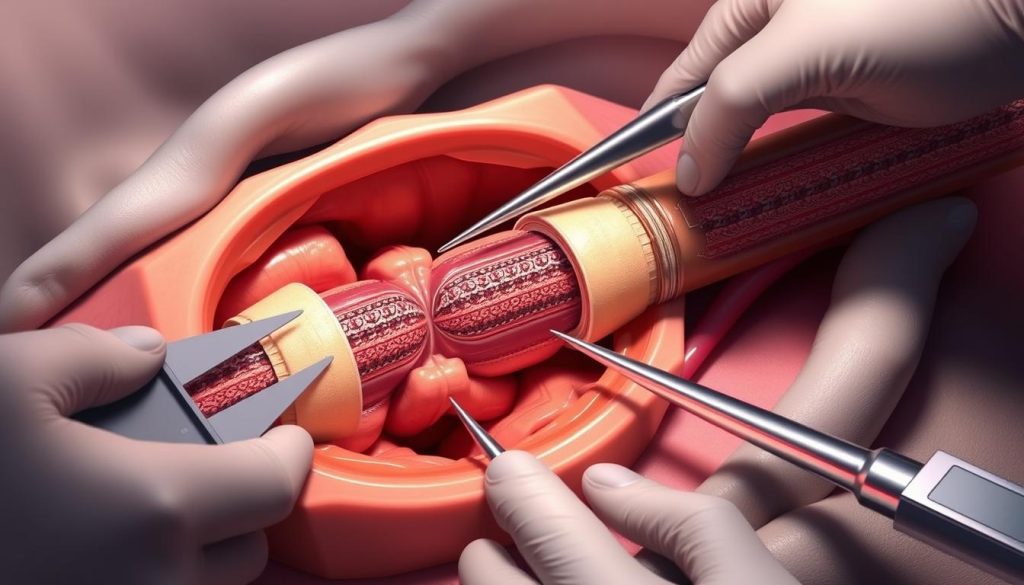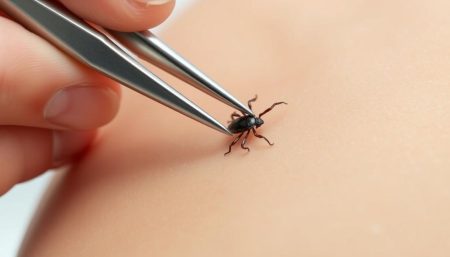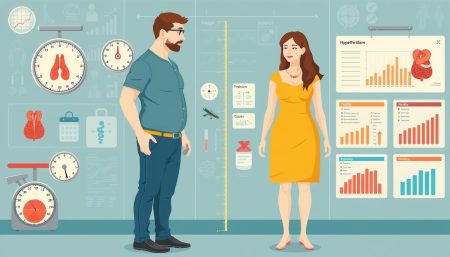Aortic aneurysm surgery is a lifesaving procedure for a dangerous bulge in the main artery. Skilled surgeons use advanced techniques to fix the weak aortic wall. This prevents deadly ruptures.
Recovering from this surgery takes time and careful post-operative care. Patients must follow specific guidelines to heal properly and avoid complications. Knowing the surgery and recovery process is key for those facing it.
Vascular surgery has made great strides, giving patients more options. From open surgery to minimally invasive methods, doctors choose the best for each patient. This improves results and shortens recovery times.
What Is an Aortic Aneurysm and Why Surgery Is Necessary
An aortic aneurysm is a dangerous bulge in the aorta. This is the main blood vessel that carries blood from the heart to the body. If this bulge grows too big, it can burst, which is very dangerous.
Surgery is needed to stop this from happening. It’s the only way to prevent a life-threatening situation.
Types of Aortic Aneurysms
There are two main types of aortic aneurysms:
- Abdominal aortic aneurysm: Occurs in the lower part of the aorta
- Thoracic aortic aneurysm: Develops in the chest area
Risk Factors and Warning Signs
Several factors increase the risk of developing an aortic aneurysm:
| Aneurysm Risk Factors | Warning Signs |
|---|---|
| Smoking | Chest or back pain |
| High blood pressure | Difficulty swallowing |
| Age (over 65) | Shortness of breath |
| Family history | Pulsating feeling in abdomen |
Complications of Untreated Aneurysms
Not treating an aortic aneurysm can lead to serious problems. The biggest risk is rupture, which causes internal bleeding and can be fatal. Other issues include blood clots and damage to nearby organs.
Early detection and surgery are key to avoiding these dangers. They help prevent life-threatening situations.
Diagnosing Aortic Aneurysms: Modern Medical Imaging
Vascular surgery uses advanced imaging to find and check aortic aneurysms. These methods help doctors spot problems early and plan treatments.
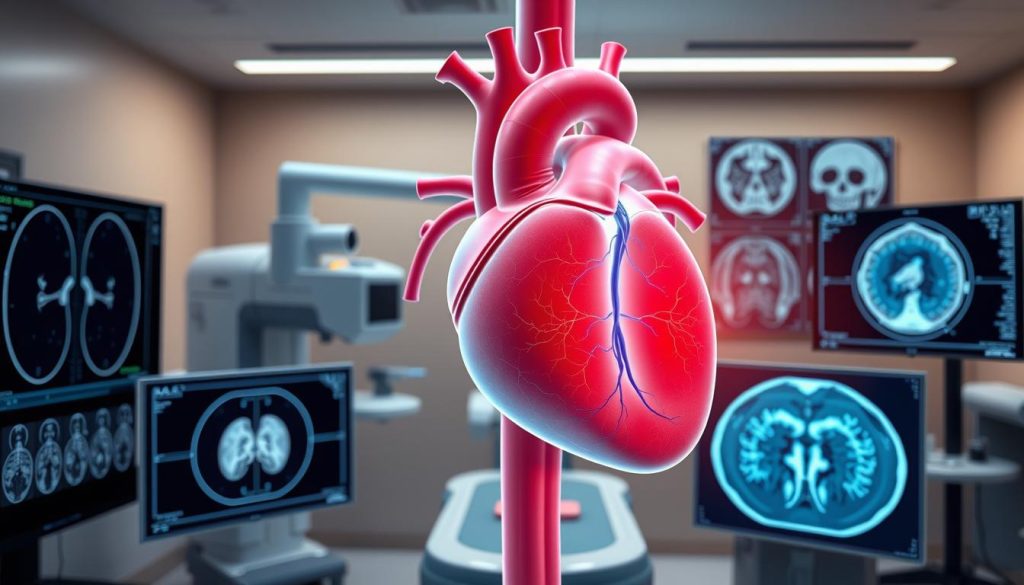
CT scans are a top choice for vascular surgeons. They give detailed 3D images of the aorta. This shows the size and shape of any aneurysms. Doctors then decide if surgery is needed and how to do it.
MRI scans are another strong option. They use magnetic fields to make clear pictures of the aorta without radiation. This makes MRI great for patients who need scans often.
Ultrasound is key for regular checks. It’s fast, painless, and doesn’t use radiation. Doctors often use it to screen high-risk patients for aneurysms before they become serious.
“Early detection through imaging can be life-saving. We can catch aneurysms before they cause problems and plan the best course of action.”
These imaging methods help vascular surgery teams:
- Measure aneurysm size accurately
- Track growth over time
- Plan precise surgical approaches
- Monitor patients after treatment
With these tools, vascular surgeons can give personalized care. This improves outcomes for patients with aortic aneurysms.
Types of Aortic Aneurysm Surgery
Aortic aneurysm surgery has changed a lot, giving patients different options. Each method aims to fix the weak aortic wall and stop it from bursting. Let’s look at the main surgical techniques used today.
Endovascular Repair (EVAR)
Endovascular repair is a less invasive method. It uses small cuts to put in a stent-graft. This method is quicker to recover from and has fewer complications than open surgery. It’s best for patients with the right anatomy and those at high risk for traditional surgery.
Traditional Open Surgery
Open surgery requires a big cut to reach the aorta directly. Surgeons can then take out the damaged part and replace it with a synthetic graft. This method is more invasive but is needed for complex cases or when EVAR isn’t an option.
Minimally Invasive Options
New surgical techniques have led to less invasive methods. These hybrid approaches mix elements of EVAR and open surgery. They offer the benefits of less invasive methods while tackling complex aneurysms.
| Surgical Approach | Incision Size | Recovery Time | Best For |
|---|---|---|---|
| Endovascular Repair | Small (1-2 cm) | 1-2 weeks | Older patients, high-risk cases |
| Open Surgery | Large (20-30 cm) | 4-6 weeks | Complex aneurysms, younger patients |
| Minimally Invasive | Medium (5-10 cm) | 2-3 weeks | Specific anatomical variations |
Your surgeon will pick the best method for you based on your aneurysm’s details and health. Each option has its own benefits, and the choice depends on your unique situation.
Preparing for Aortic Aneurysm Surgery
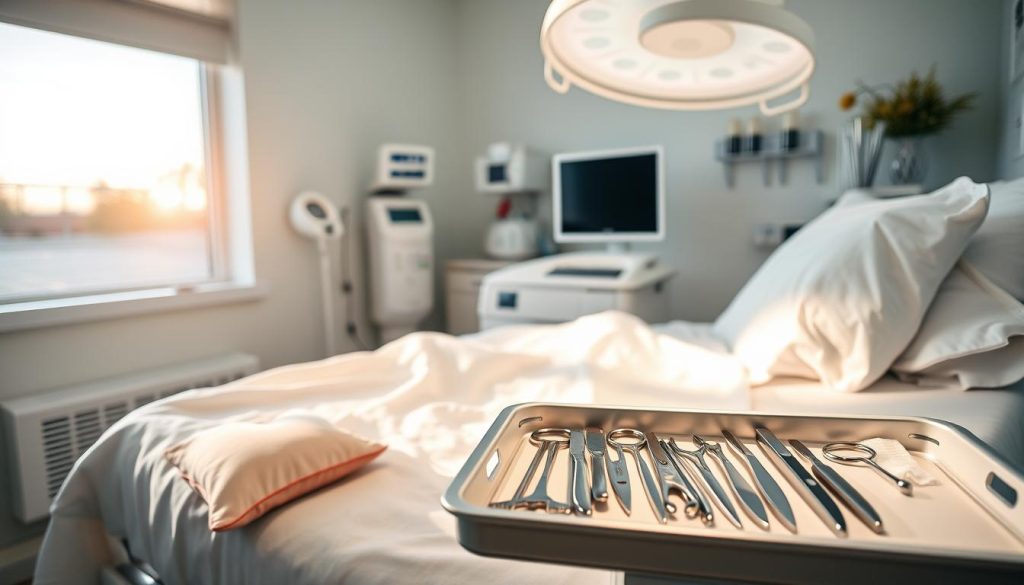
Preparing for aortic aneurysm surgery is a big step. Your doctor will check you with various tests. These might include blood work, heart scans, and lung function tests.
Changing your lifestyle is also key. Your healthcare team might suggest:
- Quitting smoking
- Reducing alcohol
- Eating better
- Starting gentle exercises
Managing your medications is important too. Your doctor will look at your current meds and might change them. They’ll also talk about stopping blood thinners before surgery.
You’ll need to follow a special diet before surgery. You might have to fast for a while. Your doctor will tell you exactly when to stop eating and drinking.
“Understanding your surgery and recovery process can significantly reduce anxiety and improve outcomes.”
Learning about your surgery is essential. Your team will explain the procedure, risks, and recovery time. This helps you make smart choices and feel more prepared.
Getting mentally ready is just as important. Think about talking to a counselor or joining a support group. Sharing your feelings and experiences can offer comfort and insights as you get ready for surgery.
The Role of Vascular Grafts in Aneurysm Repair
Vascular grafts are key in treating aortic aneurysms. They strengthen weak blood vessel walls, stopping ruptures. Let’s look at the types of grafts used in fixing aneurysms.
Synthetic Graft Materials
Doctors often pick synthetic materials for vascular grafts. These include:
- Polyester (Dacron)
- Polytetrafluoroethylene (PTFE)
- Expanded polytetrafluoroethylene (ePTFE)
These materials are strong and rarely cause immune reactions. They’re great for endovascular repair of abdominal aortic aneurysms.
Stent Graft Technology
Stent grafts mix a fabric tube with a metal mesh. This tech makes for less invasive procedures. The stent graft goes in through a small cut and expands in the aorta.
Biological Graft Options
Some patients get biological grafts. These are made from human or animal tissue. Though less common, they’re useful in some cases.
| Graft Type | Advantages | Disadvantages |
|---|---|---|
| Synthetic | Durable, readily available | Risk of infection |
| Stent Graft | Minimally invasive | May need future adjustments |
| Biological | Lower infection risk | Limited availability |
Choosing the right vascular graft depends on the patient’s condition, aneurysm location, and health. Surgeons weigh these factors to get the best results for aneurysm repair.
Understanding the Surgical Procedure Step by Step
Aortic aneurysm surgery is a complex procedure that needs great skill. It depends on the aneurysm’s type and location. Let’s explore the main steps of this critical surgery.
First, the patient is given general anesthesia. The surgical team then gets ready for the incision. For open surgery, a big incision is made in the chest or belly. For endovascular repair, small cuts are made in the groin.
Next, the surgeon finds the aneurysm. In open surgery, the aorta is clamped to stop blood flow. The aneurysm is opened, and a graft is sewn in to fix the weak spot. For endovascular repair, a stent-graft is guided to the aneurysm through a catheter.
After placing the graft, the surgeon checks for blood flow and leaks. The incisions are closed, and the patient is taken to recovery for monitoring.
| Procedure Step | Open Surgery | Endovascular Repair |
|---|---|---|
| Incision | Large chest or abdominal incision | Small groin incisions |
| Access to Aneurysm | Direct visualization | Catheter-guided |
| Aneurysm Repair | Graft sewn in place | Stent-graft deployed |
| Recovery Time | Longer | Shorter |
Knowing these steps can make patients feel more ready for their surgery. Each surgery is customized for the patient’s needs, aiming for the best results.
Post-Operative Care and Hospital Stay
After aortic aneurysm surgery, patients start a critical recovery phase. This time is filled with close monitoring and special care. It’s all to help them heal well and avoid any problems.
Immediate Recovery Period
Patients wake up in the ICU after surgery. Nurses keep a close eye on their vital signs. They watch for any signs of bleeding or infection.
Most patients stay in the ICU for 24 to 48 hours. Then, they move to a regular hospital room.
Pain Management Protocols
Managing pain is key after surgery. Doctors use different methods to keep patients comfortable:
- Intravenous pain medications
- Patient-controlled analgesia pumps
- Epidural catheters for regional pain relief
Monitoring and Complications
Healthcare providers keep an eye out for possible problems after surgery. Some common issues include:
| Complication | Symptoms | Management |
|---|---|---|
| Bleeding | Rapid heart rate, low blood pressure | Blood transfusions, possible reoperation |
| Infection | Fever, redness at incision site | Antibiotics, wound care |
| Kidney problems | Decreased urine output | Fluid management, dialysis if severe |
Spotting and treating these problems early is vital for a good recovery. Patients usually stay in the hospital for 5 to 7 days. This depends on how they’re doing and if any complications come up.
Recovery Timeline and Milestones
After vascular surgery for an aortic aneurysm, patients start a healing journey. The recovery time varies, but most follow a similar path. In the first weeks, rest is key. Patients focus on wound care and gentle movements.
As strength comes back, they slowly increase their activity. This helps them heal faster.
By the one-month mark, many can do light household tasks. Walking gets easier, and tiredness decreases. At two months, most go back to office work or light-duty jobs.
Driving is often okay at this stage, with doctor approval.
Three to four months post-surgery, patients usually get back to most normal activities. But, heavy lifting and hard exercise are not allowed yet. Full recovery can take up to six months, depending on the surgery type and the patient.
- 1 month: Light household tasks
- 2 months: Return to office work
- 3-4 months: Resume most activities
- 6 months: Full recovery for many
Throughout recovery, patients see their vascular surgeon for follow-ups. These visits check on healing and adjust the recovery plan if needed. Being patient and following medical advice are essential for a good recovery after aortic aneurysm surgery.
Physical Therapy and Rehabilitation Process
After aortic aneurysm surgery, a structured rehabilitation program is key for recovery. It helps patients regain strength and safely return to daily activities. The approach depends on whether you had a minimally invasive procedure or traditional surgery.
Exercise Guidelines
Your doctor will give you a personalized exercise plan. It begins with gentle movements and gets more intense over time. Walking is often suggested as a low-impact activity to boost circulation and stamina.
- Start with short walks, 5-10 minutes, several times a day
- Gradually increase duration and distance as strength improves
- Incorporate light stretching exercises to maintain flexibility
Activity Restrictions
After surgery, some activities are off-limits to protect your healing body. These restrictions are more important if you had a minimally invasive procedure, as recovery can differ.
| Activity | Restriction Period | Notes |
|---|---|---|
| Lifting heavy objects | 6-8 weeks | Limit to 10 pounds or less |
| Driving | 2-4 weeks | Until cleared by your doctor |
| Strenuous exercise | 3-6 months | Gradually reintroduce with doctor’s approval |
Return to Daily Activities
Getting back to normal activities is a slow process. Your healthcare team will guide you based on your progress and surgery type. Those who had a minimally invasive procedure often start light activities sooner than those with open surgery.
Remember, everyone’s recovery is different. Always listen to your doctor’s advice and report any unusual symptoms during your rehabilitation journey.
Long-term Follow-up and Monitoring
After aortic aneurysm surgery, patients need to keep up with ongoing care. Regular check-ups help doctors see how recovery is going and spot problems early. The schedule for these visits depends on the surgery type.
Those who had endovascular repair need to be checked more often. This is because the procedure uses stents in the blood vessels. Doctors usually do imaging tests every 6 to 12 months to see how the stent is doing.
Patients who had open surgery might have a different plan. Their first visits might be less frequent, with yearly check-ups becoming common after a few years. These visits include physical exams and imaging studies.
| Follow-up Type | Endovascular Repair | Open Surgery |
|---|---|---|
| Initial Check-up | 1 month post-surgery | 1-2 months post-surgery |
| Imaging Frequency | Every 6-12 months | Annually after first year |
| Long-term Schedule | Lifelong monitoring | Can decrease over time |
Patients are key to their own care. They should tell their doctors right away if they notice anything strange. This could be pain in the chest or belly, dizziness, or trouble breathing. These signs might mean a problem that needs quick attention.
By sticking to their follow-up plans and staying alert, patients can make sure their aortic aneurysm repair works well over time. This helps keep their blood vessels healthy.
Lifestyle Changes After Surgery
After aortic aneurysm surgery, patients need to make big lifestyle changes. These changes help keep them healthy and lower the risk of future problems. They are key to a smooth recovery.
Dietary Recommendations
Eating well is vital for those recovering from aortic aneurysm surgery. Focus on:
- Fruits and vegetables
- Whole grains
- Lean proteins
- Low-fat dairy products
Try to avoid salt, saturated fats, and processed foods. This helps keep blood pressure and cholesterol in check.
Exercise Protocols
Starting with gentle exercise is important. It boosts circulation and heart health. Begin with:
- Short walks
- Gentle stretching
- Light resistance exercises
Always talk to your doctor before starting any exercise. They will guide you on how to increase the intensity and duration safely.
Smoking Cessation
Quitting smoking is essential for lowering aneurysm risks. Smoking damages blood vessel walls and raises the risk of aneurysms. For help, try:
- Nicotine replacement therapy
- Counseling
- Support groups
Your doctor can provide resources and advice to help you stop smoking for good.
By making these lifestyle changes, patients can greatly improve their health. Remember, sticking to these changes is important for managing aneurysm risks and keeping the heart healthy.
Potential Complications and Warning Signs
After aortic aneurysm surgery, patients need to watch for possible complications. Both types of repairs, abdominal and thoracic, come with risks. Knowing the warning signs is key to getting quick medical help if needed.
Short-term issues might include infection, bleeding, or blood clots. Long-term problems could be graft issues or the aneurysm coming back. Look out for these warning signs:
- Severe pain in the chest, back, or abdomen
- Fever or chills
- Unusual swelling or redness at the incision site
- Difficulty breathing or shortness of breath
- Rapid heart rate or palpitations
It’s important to tell normal recovery symptoms from serious ones needing quick care. Mild pain and tiredness are usual. But, sudden or severe symptoms mean you need to see a doctor right away.
| Normal Symptoms | Warning Signs |
|---|---|
| Mild incision pain | Severe, sudden pain |
| Slight fatigue | Extreme weakness |
| Minor swelling | Significant swelling or redness |
| Occasional dizziness | Persistent lightheadedness |
Those who had thoracic aortic aneurysm repair should watch for chest pain or breathing trouble. Patients who had abdominal aortic aneurysm surgery should keep an eye out for belly pain or bowel changes.
Support Resources and Patient Communities
Patients going through aortic aneurysm surgery can find great support. Online forums connect people who have had similar surgeries. They share tips and advice, helping each other out.
Support groups, both online and in-person, offer emotional support. Hospitals and medical centers often host these groups. They are led by healthcare experts, where patients can share their feelings and learn from others.
Learning about aortic aneurysm surgery is key. The American Heart Association provides detailed information. This helps patients and their families understand what to expect during recovery.
Having family and caregiver support is very important. They can help with daily tasks and be there emotionally. This support helps patients feel better and recover faster from their surgery.
FAQ
Q: What is an aortic aneurysm?
A: An aortic aneurysm is a bulge in the aorta, the main blood vessel. It carries blood from the heart to the body. There are two types: abdominal and thoracic, based on where it is.
Q: How is an aortic aneurysm diagnosed?
A: Doctors use CT scans, MRI, or ultrasound to find aortic aneurysms. These tests help them see the size and location of the bulge.
Q: What are the treatment options for aortic aneurysms?
A: Treatments include endovascular repair, open surgery, and minimally invasive methods. The best choice depends on the aneurysm’s size and the patient’s health.
Q: What is endovascular repair (EVAR)?
A: EVAR is a minimally invasive procedure. A stent graft is inserted through small incisions in the groin. It’s guided to the aneurysm site using imaging. This method often means a quicker recovery than open surgery.
Q: How long does recovery take after aortic aneurysm surgery?
A: Recovery time varies. Patients who have EVAR might recover in 2-4 weeks. Those with open surgery may take 6-8 weeks or more.
Q: What are the risk factors for developing an aortic aneurysm?
A: Risk factors include age over 65, smoking, high blood pressure, and family history. Atherosclerosis and genetic conditions like Marfan syndrome also increase risk.
Q: What lifestyle changes are recommended after aortic aneurysm surgery?
A: Patients should eat heart-healthy, exercise as approved, quit smoking, and manage stress. These changes help prevent future heart problems.
Q: How often should I have follow-up appointments after aortic aneurysm surgery?
A: Follow-ups start at 1 month, then 6 months, and annually. The schedule may change based on surgery type and patient needs.
Q: What are the warning signs of possible complications after aortic aneurysm surgery?
A: Look out for severe chest, back, or abdominal pain, trouble breathing, rapid heart rate, fever, or infection signs at the incision. Seek help right away if you notice these symptoms.
Q: Are there support groups available for patients who have undergone aortic aneurysm surgery?
A: Yes, there are online forums, local groups, and patient organizations. They offer emotional support, advice, and shared experiences for patients and their families.












